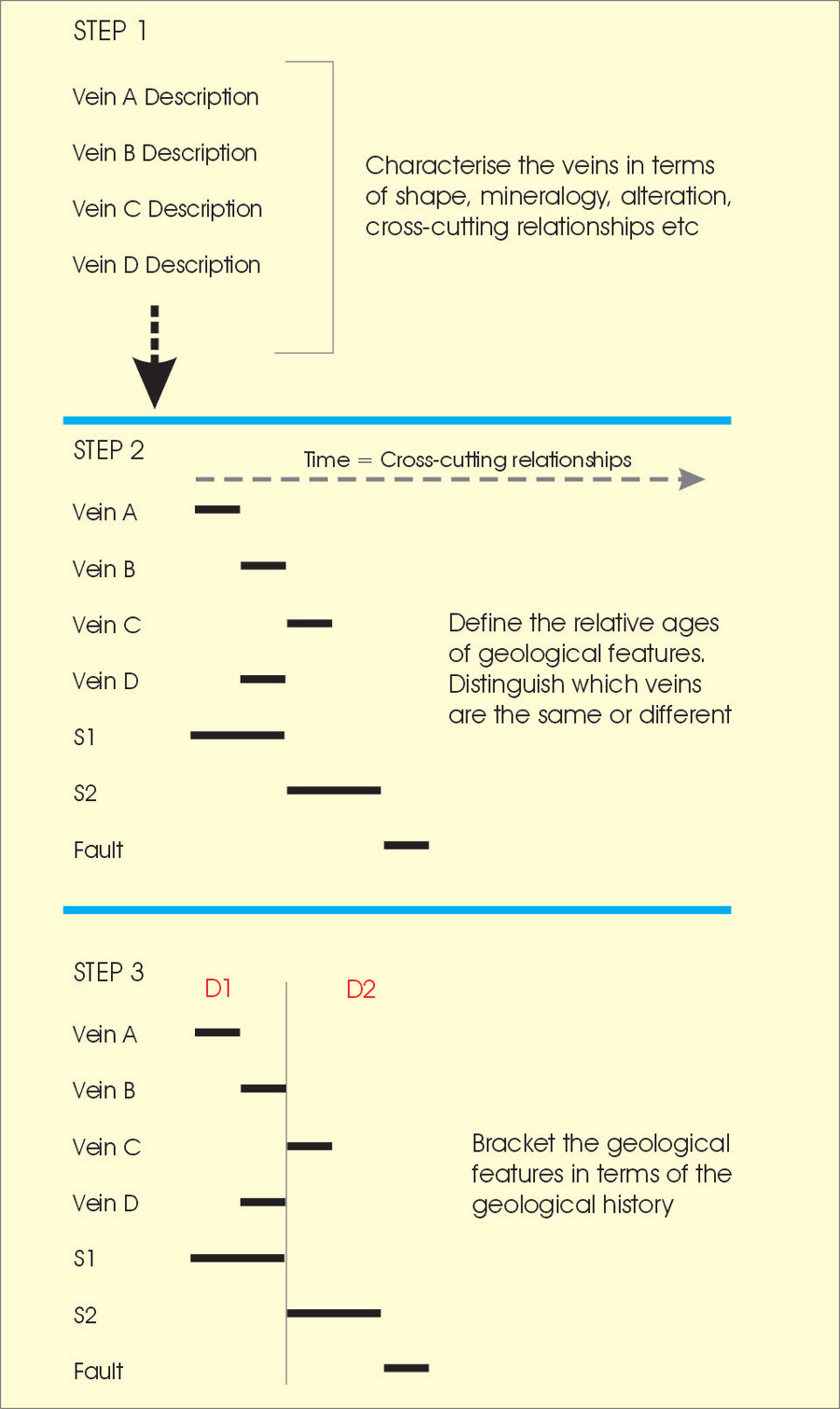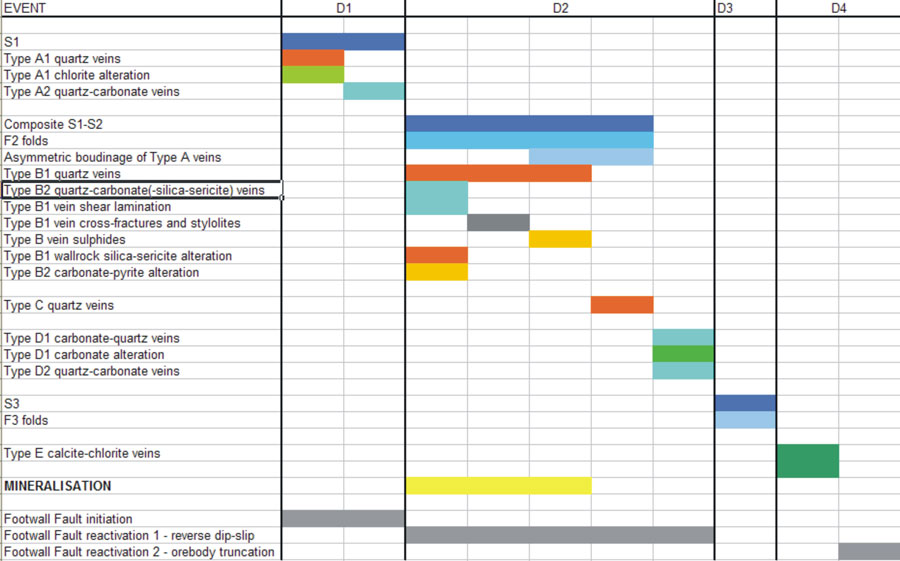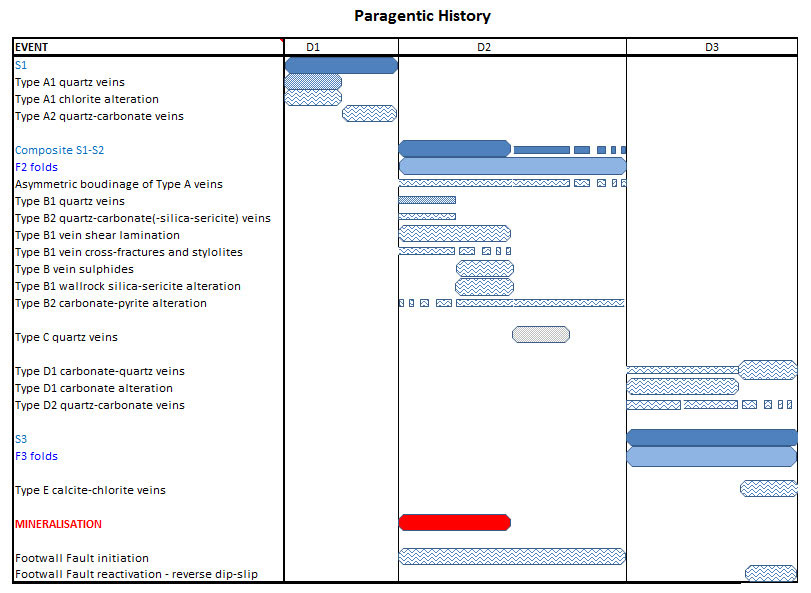Let’s start out by with an admission – I am biased. I believe structural geology is king and without it you can’t fully understand 99% of mineralisation occurrences. However, there is a caveat to this statement. The full understanding of the 99% of mineralisation occurrences requires an integrated approach that should include all facets of geology, not just structure. Geochemistry, igneous petrology, stratigraphy etc – they all need to be considered. In addition, they need to be considered at all scales.
Too often I have heard people say ‘we need to resolve the structure’ and then off they go and measure a lot of structures, plot them on a stereo net and then pat themselves on the back because they consider most of the work to be complete. Unfortunately, the majority of data Orefind has been presented with by clients has not been collected in context. We will receive columns of planar data but there is no indication of what structures we are looking at. Lineation data is very rare. Even if the structures have been subdivided into populations, it is commonly restricted to the broad categories of veins, cleavages and faults. This is where the problem starts. For example, most hardrock hydrothermal deposits have more than one vein set but the temporal relationships are rarely, if ever, documented. Consequently, databases are full of vein orientation data but it comprises all vein types and is next to useless.
One of the most important tasks to do when trying to understand a deposit is to establish a geological history. Note that I say ‘geological history’ as opposed to ‘structural history’. The structural history comprises the sequence of deformation events and the various structures that have formed in response to this. The structural history is a subset of the geological history. The ultimate goal of the geologist should be formulation of a complete geological history that can be used as an exploration tool and for understanding orebodies such that they can be economically mined.
The repercussions of not understanding the geological history can be expensive. If the mineralising structures, such as a particular vein population, are not identified then orientation constraints cannot be resolved. Similarly, temporally and spatially associated structures, such as faults that have acted as conduits for mineralising fluids, may be overlooked. Furthermore, incorrect drilling orientations may be used. Unfortunately, the ultimate result may simply be a waste of time and money. This can be very embarrassing if subsequent exploration by another company discovers an economic deposit.
Establishing a vein-alteration paragenesis should be done systematically (Figure 1). It needs to be incorporated into a structural history, effectively giving a geological history for a deposit. Other events, such as igneous intrusion events and metamorphic events must be included.
 Figure 1: Summary procedure for undertaking an integrated paragenetic-structural study.
Figure 1: Summary procedure for undertaking an integrated paragenetic-structural study.
Examples of paragenetic tables are shown in the Figures 2 and 3, which have essentially the same information. However, the software used is slightly different. Figure 2 makes use of the standard format of an Excel spreadsheet. Figure 3 was constructed using Orefind’s paragenetic table software, which also uses Excel. Much more detail of each step is expanded on in Orefind’s structure course manuals, which are given to customers who undertake our courses - check the
Media tab on Orefind’s website.
Ultimately, the onus is on the geologist to document the overprinting and geometric relationships between all events. It’s not rocket science and there is no excuse for not doing it.
 Figure 2: Example of an Excel spreadsheet paragenetic table incorporating veins, alteration, and structure. Similar events or structures are coded with similar colours e.g. silica alteration and veining is red. Mineralisation has been highlighted in yellow.
Figure 2: Example of an Excel spreadsheet paragenetic table incorporating veins, alteration, and structure. Similar events or structures are coded with similar colours e.g. silica alteration and veining is red. Mineralisation has been highlighted in yellow.  Figure 3: Example of an Orefind’s Excel spreadsheet paragenetic table incorporating veins, alteration, and structure. Similar events or structures are coded with similar textures and colours e.g. silica alteration and veining is red. Mineralisation has been highlighted in RED.
Figure 3: Example of an Orefind’s Excel spreadsheet paragenetic table incorporating veins, alteration, and structure. Similar events or structures are coded with similar textures and colours e.g. silica alteration and veining is red. Mineralisation has been highlighted in RED.